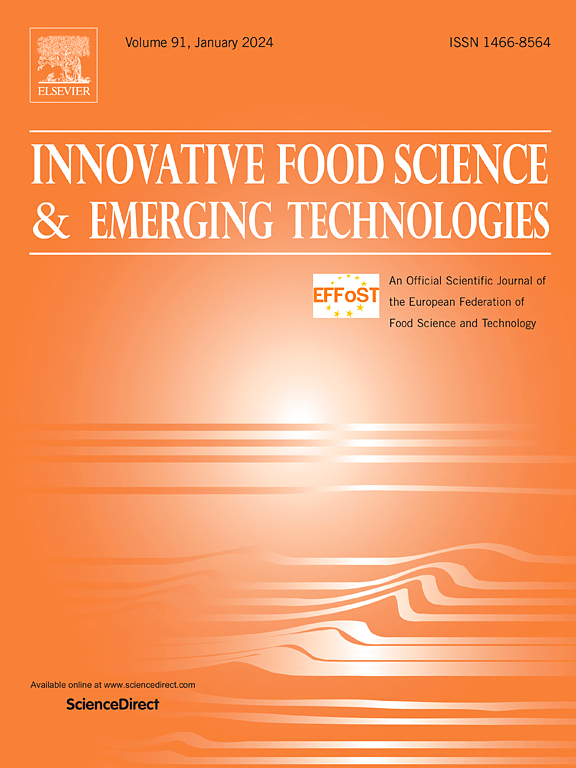Evaluation and analysis of transglutaminase-modified gluten-free soybean bread processed using ohmic heating with varied voltage levels
IF 6.3
1区 农林科学
Q1 FOOD SCIENCE & TECHNOLOGY
Innovative Food Science & Emerging Technologies
Pub Date : 2024-12-17
DOI:10.1016/j.ifset.2024.103904
引用次数: 0
Abstract
This study investigates the impact of ohmic heating voltage gradients and transglutaminase (TGase)-catalyzed protein crosslinking on the development process and the properties of gluten-free (GF) bread made using soybean as the sole flour. Voltage gradients (5.83–10 V/cm) significantly influenced bread characteristics by enhancing temperature, electrical conductivity, and current intensity, while reducing baking time, baking loss, and specific energy consumption. Ohmic-heated bread exhibited superior specific volume (2.24–2.93 cm3/g) compared to conventionally baked bread (1.84 cm3/g), alongside improved porosity, pore size, and texture. Optimal treatment at 7.5 V/cm (90 V) yielded bread with a specific volume of 2.93 ± 0.37 cm3/g, porosity of 30.73 ± 2.07 %, and desirable textural properties, including springiness (9.36 ± 0.05) and chewiness (4.87 ± 1.54 N). TGase addition further improved quality, increasing specific volume, springiness, and cohesiveness, while reducing hardness and altering color properties. Ohmic heating efficiently achieved temperatures up to 97 °C, with higher voltage gradients correlating to faster heating rates, greater electrical conductivity, and reduced energy consumption. However, TGase inclusion reduced these rates due to batter modifications. The findings demonstrate that ohmic heating and TGase application are effective in overcoming key challenges in GF bread production. This approach, using soybean flour, improves nutritional quality and sensory attributes, offering a promising alternative to conventional methods.
求助全文
约1分钟内获得全文
求助全文
来源期刊
CiteScore
12.00
自引率
6.10%
发文量
259
审稿时长
25 days
期刊介绍:
Innovative Food Science and Emerging Technologies (IFSET) aims to provide the highest quality original contributions and few, mainly upon invitation, reviews on and highly innovative developments in food science and emerging food process technologies. The significance of the results either for the science community or for industrial R&D groups must be specified. Papers submitted must be of highest scientific quality and only those advancing current scientific knowledge and understanding or with technical relevance will be considered.

 求助内容:
求助内容: 应助结果提醒方式:
应助结果提醒方式:


